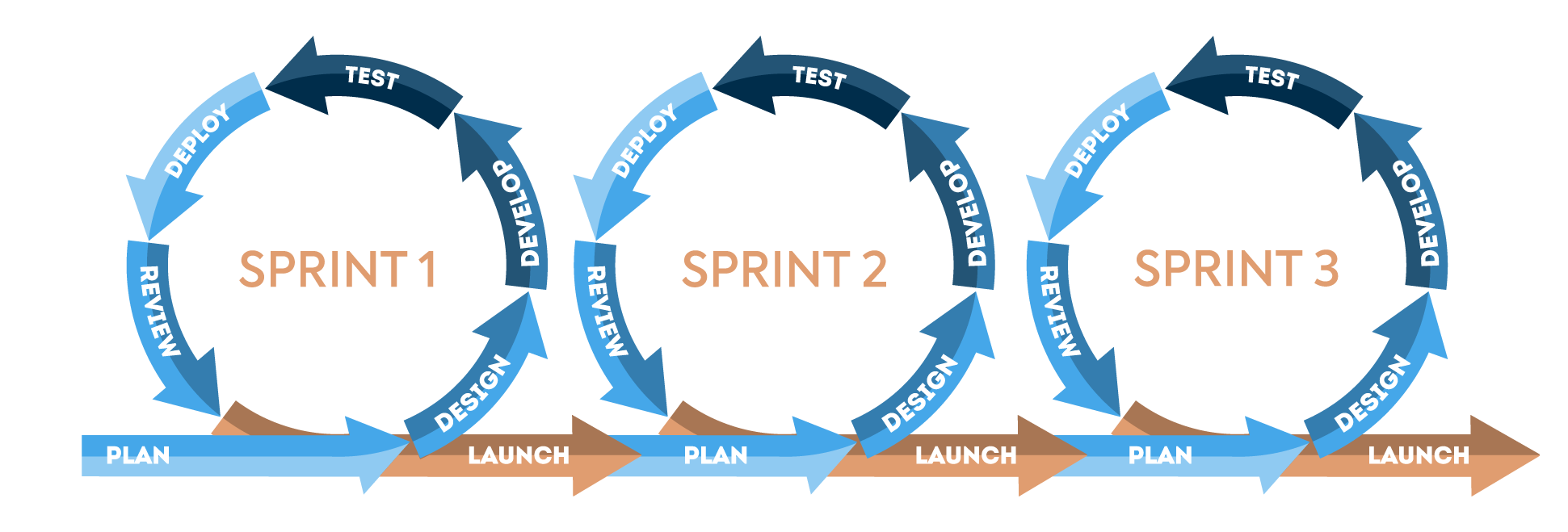KNOWLEDGE CENTER
AGILE Instructional Design
AGILE is a type of instructional design model that originated in software development but has evolved beyond technology to become one of the more popular design models in recent years. Agile eLearning development is a relatively new process but is proving to be a model that yields quality results when implemented correctly. The idea behind Agile is to create a more “agile”, nimble, flexible, and, adaptable design process for eLearning. Agile’s more fluid structure allows it to be flexible to each lesson plan.
The Foundation of Agile Instructional Design
The core concept behind Agile is to grow every solution to be unique to each situation while ensuring continuous improvements. Agile is an acronym that further explains the tenants of the Agile method and shines more light on what makes the Agile process unique.
- Align – Define the objective and set goals.
- Get Set – Create a blueprint of how the process should develop.
- Iterate – Implementation to reach the goals/objectives by following through with the plan.
- Leverage – After iteration, take in all the data.
- Evaluate – Analyze the data from the implementation and feed that information back into the project to improve every iteration.

The Benefits of AGILE Instructional Design
The Agile design process brings many benefits, but there are 3 major benefits of Agile instructional design: High-Quality Courses, Improved Feedback, and Creating Immersive Course Content.
High-Quality Courses
While Agile learning design projects are being worked on, they are broken down into smaller stages that must be completed before progressing. This allows designers to more easily identify and remedy issues in the design before the project goes live. By working on a course in stages and constantly refining it, fewer errors make it into the final product. While this design process benefits the designers, the customers see the largest benefit.

Improved Feedback
Due to the nature of Agile learning design, feedback is not only more often received but also more likely to be implemented. The Evaluation and Leverage aspect of Agile requires that feedback is gathered not only from the designers themselves but also from learners. This allows for a broader perspective and the constant testing and feedback leads to developing higher-quality courses.
Creating Immersive Course Content
The quality of content is improved by Agile. Agile courses contain material that immerses the learner making the content easier to digest and overall more enjoyable. The feedback directly pulled from the learner ensures the content aligns with their needs. The constant improvements and testing due to this feedback are what make Agile courses more engaging for learners.
The AGILE Method at Work
The Agile method of instructional design can be hard to conceptualize as its fluid nature can leave the model feeling vague. However, when the steps of the Agile method are broken down the process becomes clearer.
Every project starts with a meeting between stakeholders, clients, creators, designers, and any other employees involved in the project. This initial meeting is where brainstorming begins, and a loose plan is formulated. The non-negotiable elements and objectives of a course are hammered out and all parties leave the meeting comfortable with the planned direction of the course.
After the initial meeting has laid out the project goals, development begins. Agile projects are commonly worked on in short bursts or sprints. One element of a course is iterated and rapidly prototyped before being sent to the client for feedback and testing. The course element is then changed according to feedback and test results. Course designers meet frequently, sometimes daily, during this phase to ensure all team members are on the same page and that changes can be implemented quickly. This process is repeated for each element of a course until it is time to bring the project together as a whole.
The design team meets to bring the project together into a rough whole that is then shown to the clients. The Alpha build of the course is then tested extensively and changed until the client is satisfied, which brings the course into the Beta stage. The course is refined until all parties are confident the goals have been achieved and the project ends when the course is launched.

The AGILE Method
The Agile process of creating a course is different from other popular models for a few different reasons. Agile projects iterate a design until the desired outcome is achieved. The iteration phase of Agile design often works in a circular fashion where a basic design is quickly made and then tested. The results of those tests inform the next iteration where the cycle starts again. The waterfall design method moves in a straight line which requires that the previous step is completed before moving on with iteration only occurring at the end of the project. Other popular models tend to work on one design continuously with testing coming at the very end of the design process while Agile utilizes testing phases much earlier.
In Conclusion
Agile eLearning development is different from traditional design models, but Agile’s unorthodox structure makes it capable of handling complex modern design problems. The Agile design model does take some adjustment, even the best design teams can use a helping hand. Skillsource’s instructional design consulting services help your team create the best course material possible while making full use of the Agile design method.


